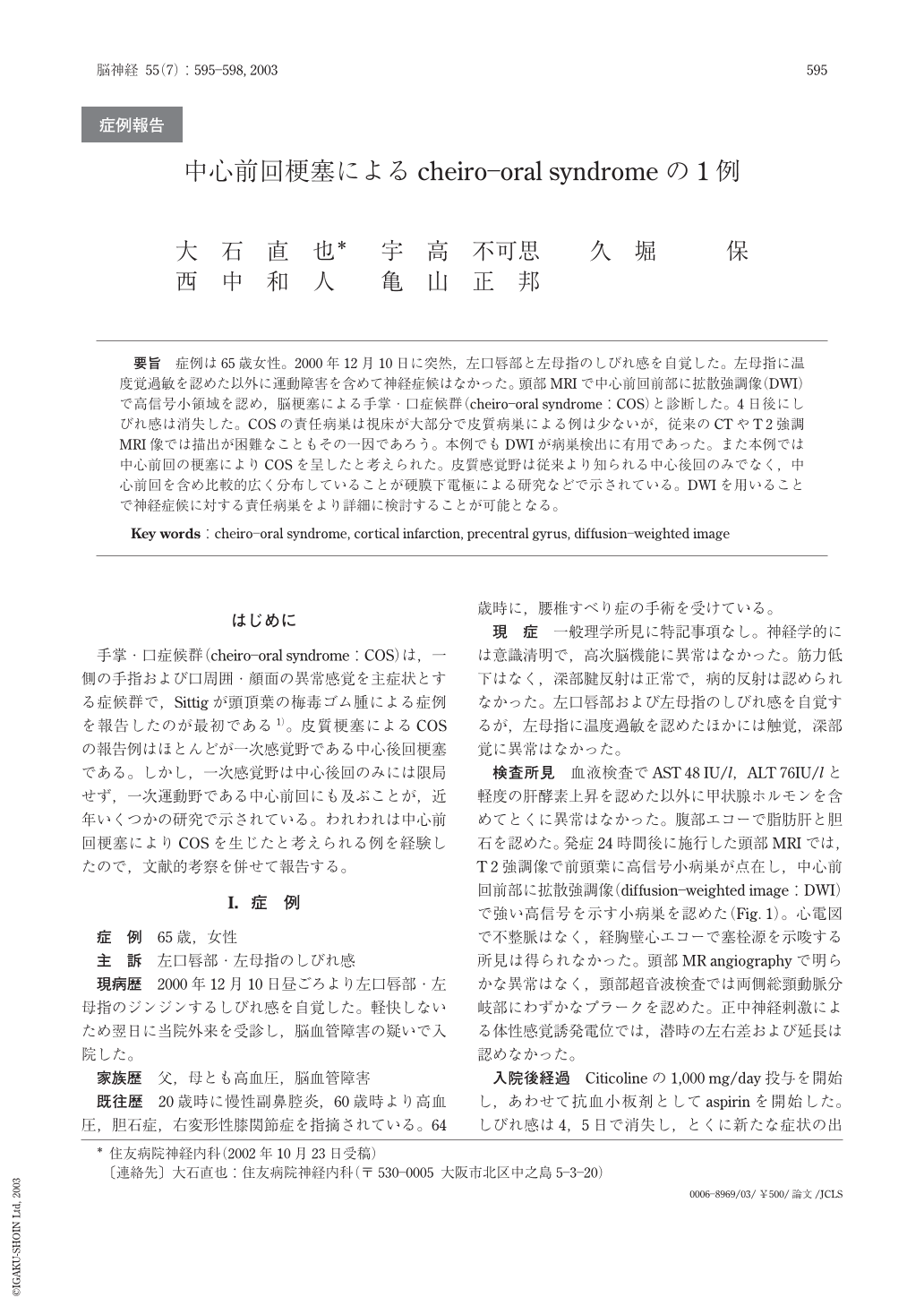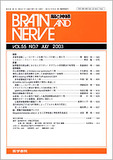Japanese
English
- 有料閲覧
- Abstract 文献概要
- 1ページ目 Look Inside
要旨 症例は65歳女性。2000年12月10日に突然,左口唇部と左母指のしびれ感を自覚した。左母指に温度覚過敏を認めた以外に運動障害を含めて神経症候はなかった。頭部MRIで中心前回前部に拡散強調像(DWI)で高信号小領域を認め,脳梗塞による手掌・口症候群(cheiro-oral syndrome:COS)と診断した。4日後にしびれ感は消失した。COSの責任病巣は視床が大部分で皮質病巣による例は少ないが,従来のCTやT?2強調MRI像では描出が困難なこともその一因であろう。本例でもDWIが病巣検出に有用であった。また本例では中心前回の梗塞によりCOSを呈したと考えられた。皮質感覚野は従来より知られる中心後回のみでなく,中心前回を含め比較的広く分布していることが硬膜下電極による研究などで示されている。DWIを用いることで神経症候に対する責任病巣をより詳細に検討することが可能となる。
We report a 65-year-old woman with sudden onset of paresthesia on the left side of the lip and left thumb. Neurological examinations did not demonstrate any disturbance of higher brain function or motor function except for subjective thermohyperesthesia of the left thumb. Brain MRI demonstrated a small high intensity lesion on T 2-weighted images (T 2?WI) and diffusion-weighted images (DWI) in the right anterior precentral gyrus. She was diagnosed with cerebral infarction presenting with pure cheiro-oral syndrome (COS). Her neurological symptoms were completely abolished 4 or 5 days later. The thalamus is the region responsible for COS in the majority of cases while reports that a cortical infarction causes COS are rare, because it is difficult to show a small cortical lesion on CT or conventional T2WI. DWI is superior to T 2 WI in discriminating between acute and chronic ischemic lesions as well as in detecting small cortical lesions adjacent to the cerebrospinal fluid. In this patient, the lesion was vaguely hyperintense on T 2?WI and difficult to differentiate from an artifact caused by cerebrospinal fluid. The precentral gyrus infarction detected on DWI was thought to cause COS in this patient. Not only lesions of the postcentral gyrus as a primary sensory cortex but also those of the precentral gyrus or opercula causing COS were described in previous reports, indicating that the hand and mouth sensory areas may be widely distributed. Cortical mapping studied by electrical stimulation through subdural grid electrodes also supports this finding. Further examination of the relation between neurological symptoms and localization on MR images such as DWI is needed to clarify the distribution of the sensory cortex.

Copyright © 2003, Igaku-Shoin Ltd. All rights reserved.


